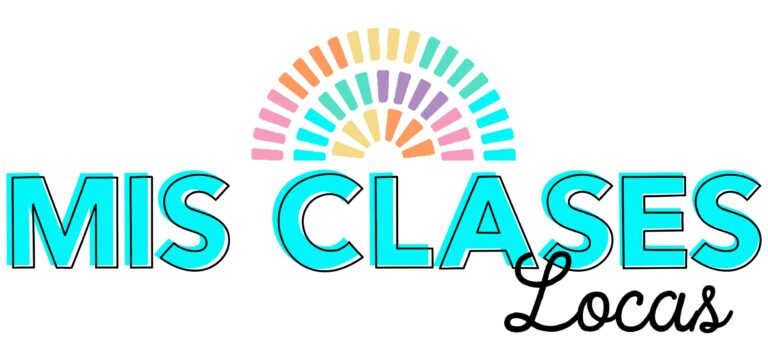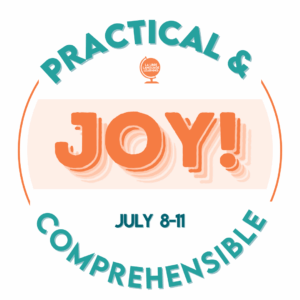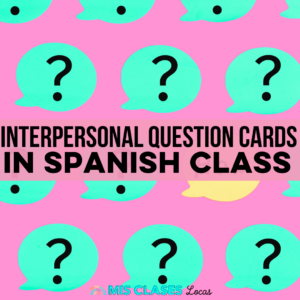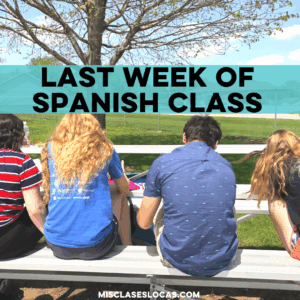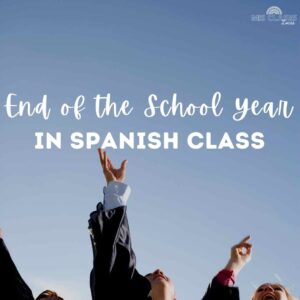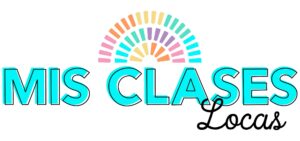Inside: Introducing FVR. How to do free voluntary reading in Spanish class. How to make FVR successful in Spanish 1.
Spanish Classroom Library
There are many posts in the past about my classroom library, including my Spanish library tour. I have also done quite a few posts on how to acquire a class library including how to write a grant. I frequently mention that we do “free reading” to start class on Tuesday and Thursday, as one of our classroom routines. So, I figured I would break down exactly how we started to do the free voluntary reading or FVR in level 1 Spanish class, and how one change made all the difference this year.
When to start FVR in Spanish Class
I have heard many differing opinions about when teachers start free reading in their world language classes. Some wait until the upper levels, while others start right away in Spanish 1.
My general rule in the past has been to start free reading second semester of Spanish 1. This year we finished reading the all-class novel El capibara con botas at the end of the first quarter and students had been expressing interest in reading from my class library. Since they had built their confidence by already finishing a whole book in Spanish, I figured we would try out free reading.
FVR Logistics for Spanish Class Free Voluntary Reading
Before Reading – Introducing FVR
I pulled all of the most simple Spanish readers, all with glossaries included, and put them all on my wire display rack. This includes all books from Spanish Cuentos, level 1 books from Fluency Matters, all books from Mira Canion, graphic novels from Señor Wooly & novels from 1goodstory. If I have multiple copies, they were placed behind each other. Students were instructed to pick a book from this shelf of level 1 readers or the current comprehensible Mundo en tus manos – news stories. See what other books I would get in the picture below, in My Amazon Store, or at the bottom of this blog post.

**Having limited books was the game changer for free reading. My huge library includes too many choices that are incomprehensible to a first-year language learner. My children’s books, and translated young adult fiction like Harry Potter, look appealing but are far too difficult. In the past when these are chosen, students just flip through looked at pictures, or scan for random things to understand. Preselected books that I knew students would feel confident about, led to the most positive first day of FVR I have ever had.
As students entered class, the instructions for free reading were projected.
- Pick a book from the wire rack or news stories (& remember where you got it to put it back)
- Find a comfortable place to read
- Spend the entire five minutes with mouths closed and eyes on reading
- If you do not know a word, you can look it up in the back of the book
- You can see the Google Slide I Project at the start of class for FVR below.
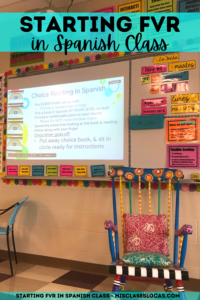
While Free Reading in Spanish Class
I read a book too. As an example, I sit on my stool in the middle of the room (or maybe kind of close to someone who needs a little proximity control:). I used to use this time to take attendance, get stuff done, and generally distract the class. Now I enjoy reading just as much as the kids and get a chance to enjoy my own Spanish library.
After free reading
At the end of five minutes, I asked students to hold up their fingers from fists to 5 to show how much they liked their choice. Most students gave it a 4 or 5. I then asked them to raise their hand if they wanted to continue with their book.
A resounding majority enjoyed their easy novela and wanted to continue another day. I also asked for volunteers to hold up their books and tell a little bit about why they liked them as a little book promo. I had blank notecards or post-it notes on which they could write their name as a bookmark to keep the place.
We did not complete a reading log. They did not have to do a report. It was all about learning to enjoy reading. The accountability was low, but the engagement was high. (For full transparency I used to have students fill out a reading log, but it killed the joy of reading)
The next day students took an assessment and had a couple of options for what to do when they were done. I had multiple Spanish 1 students ASK if they could continue with their book instead of the options I had listed! #win
Future reading in Spanish class
My plan is to continue with five minutes each Tuesday and Thursday. We start class in Spanish 1, but build up our stamina by adding more minutes as it seems appropriate. By upper levels, the goal is 15 minutes. Also, free reading can always be an option for fast finishers. Eventually, I will add higher-level novel options, especially suggesting them to the high flyers who start moving through the level 1 options.
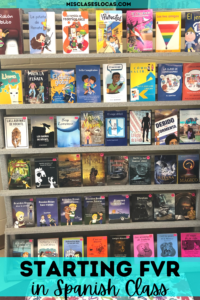
My Favorite Comprehensible Spanish 1 Books to Start FVR
- El Ratón Pablito
- La famila de Federico Rico
- La piñata de Renata
- El capibara con botas
- Tumba
- La casa de la dentista
- Juliana
- Me llamo Víctor (parte 1)
- El mensaje
Learn more about some of the best books to start FVR above with my libro lunes book reviews. Plus you can purchase them & others below.
